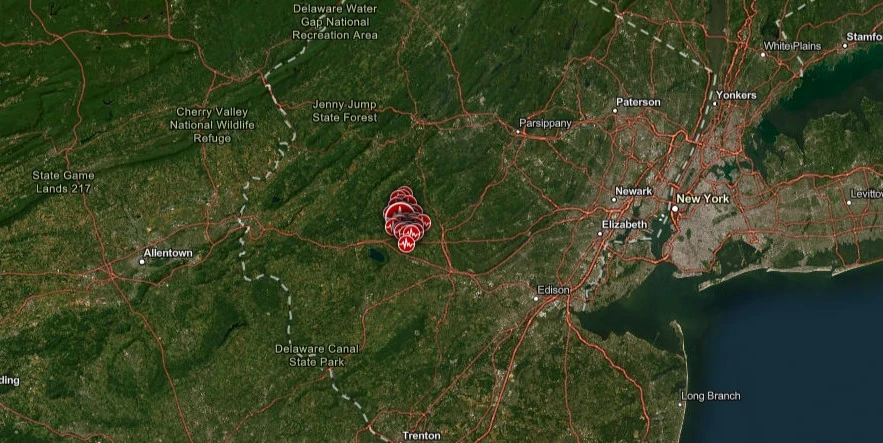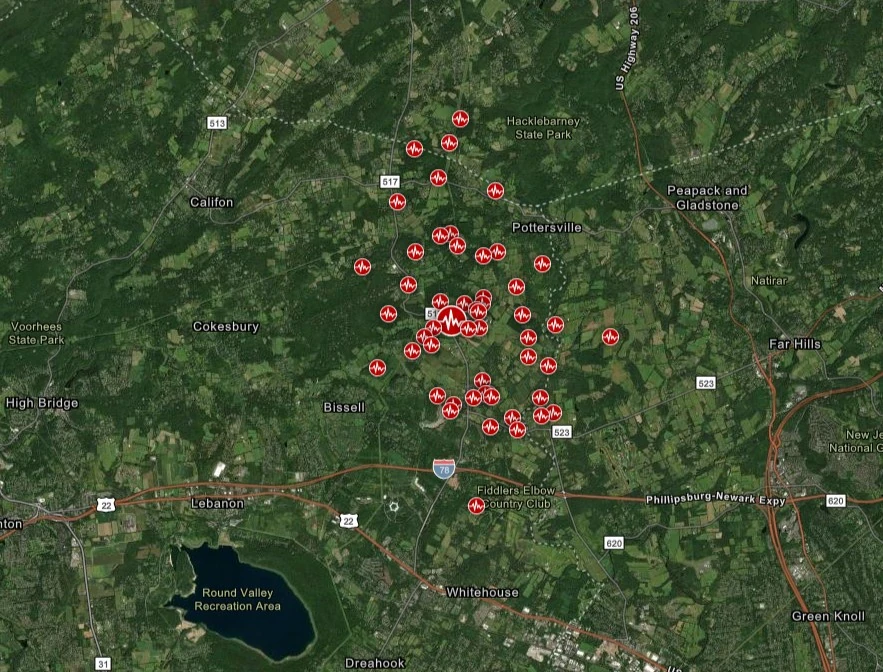USGS deploying new sensors to study aftershocks of 2024 Whitehouse Station, New Jersey Earthquake

A special USGS team has begun deploying new seismic sensors to capture aftershock data following the 4.8 magnitude earthquake that rattled New Jersey on April 5, 2024.
A US Geological Survey (USGS) team has initiated the installation of seismic sensors across New Jersey to study aftershocks of the 4.8 magnitude earthquake on April 5, 2024. The deployment involves eight “aftershock kits,” designed to record the location, duration, and magnitude of aftershocks, according to Greg Tanner, an electronics technician at the USGS’s Albuquerque Seismological Laboratory.
This project, executed in collaboration with institutions such as the Lamont Doherty Earth Observatory at Columbia University and the Texas Seismological Network, aims to enhance understanding of new seismic activity in the region.
The USGS has recorded more than 50 aftershocks with magnitudes ranging from 1.3 to 3.8 and their forecasts indicate a 12% likelihood of a magnitude 3 or greater aftershock and a 1% chance of an aftershock surpassing magnitude 4 in the upcoming week.

Despite the rarity of earthquakes in the region, USGS Research Geologist Jessica Thompson Jobe clarified that such seismic events are not unprecedented due to the presence of ancient, now inactive faults. These faults, formed millions of years ago, can occasionally become reactivated under current tectonic stresses. Earthquakes in the Eastern U.S. are felt more intensely and over broader areas compared to the Western U.S., attributed to the geological composition of the East Coast, featuring older, denser rock formations that efficiently transmit seismic waves.
The aftershock kits deployed will feature sensors for recording strong motion and high frequencies, along with a digital data transmission device and solar panels, allowing real-time data transmission to the USGS’s National Earthquake Information Center for analysis. Some kits will be standalone, while others will integrate with existing stream gauges monitored by the USGS’s New Jersey Water Science Center.
Sarah McBride of the USGS Earthquake Hazards Program highlighted the unpredictability of earthquakes but emphasized the importance of aftershock studies in preparing for future seismic events. Through this research, scientists aim to gain insights into the characteristics of earthquakes in the Eastern U.S., contributing to better preparedness and response strategies.
The epicenter of April 5 M4.8 New Jersey earthquake was located 7.7 km (4.8 miles) ESE of Califon (population 1 080), 13.3 km (8.2 miles) NW of Bridgewater (population 44 464), 16.3 km (10.2 miles) NNW of Bradley Gardens (population 14 206), 17.4 km (10.8 miles) W of Basking Ridge (population 21 424), and 52.5 km (32.6 miles) N of Trenton (population 8 422).
11 000 people are estimated to have felt strong shaking, 211 000 moderate, 17 261 000 light, and 25 293 000 light.
This earthquake — now known as the 2024 Whitehouse Station, New Jersey Earthquake — is the strongest to hit New Jersey since 1783.
References:
1 USGS deploys ‘aftershock kits’ to study White Station earthquakes – USGS – April 11, 2024
2 Rare M4.8 earthquake hits New Jersey — the strongest since 1783, U.S. – The Watchers – April 6, 2024
Featured image credit: TW/SAM, ESRI

Commenting rules and guidelines
We value the thoughts and opinions of our readers and welcome healthy discussions on our website. In order to maintain a respectful and positive community, we ask that all commenters follow these rules.